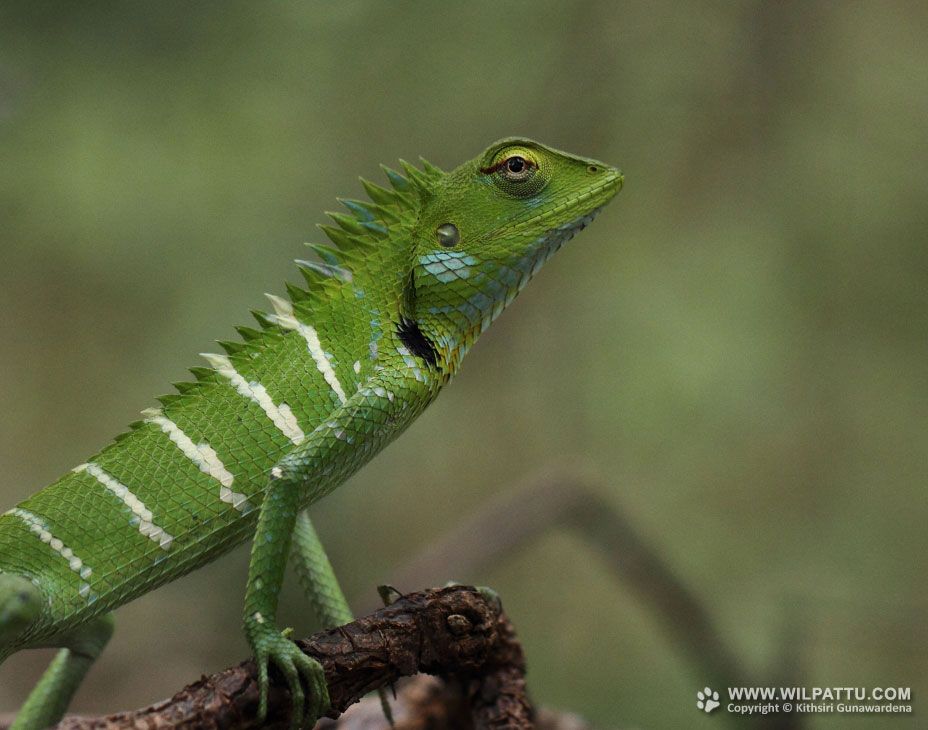
Reptiles ‹‹ Go Back
Other than in Sri Lanka this lizard is found in India and the Nicobar Islands. Except for the highest hills and the northern areas it is fairly common through out the lowlands and the mid hills of the country. The conservation status of this species is regarded as “Least Concerned” (National Red List 2012) and it is protected under the Fauna and Flora Protection Ordinance as amended by Act No. 22 of 2009.
This lizard is most common in the forests and well-wooded gardens in the wet zone. It is commonly seen close to human habitations as well. Even though it was found in the home gardens of Colombo about two decades back it has now become extremely rare and has altogether disappeared from the built up areas as oppose to the Common Garden Lizard which is quite common in almost every garden in Colombo. Even though these lizards are extremely common in the forested areas of the mid hills they are not found in the cloud forests. The highest altitude at which I have observed this species is at Dikoya at 1414 meters above sea level. I have never observed it at Horton Plain’s National Park but have seen it at Lower Ohiya at an altitude of 1400 meters. I have recorded this species in many locations in the country which include the Knuckles Forest Reserve, Sinharaja, Kanneliya, Kitulgala, Morapitiya, Peak Wilderness, Nilgala, Yala, Kumana, Maduru Oya, Galoya, Udawalawa, Minneriya and Bundala National Parks, Rajangana, Padiyathalawa, Meethirigala, Kuruwita, Ratnapura, Gampaha, Oliyagan Kele in Kamburupitiya, Labugama, Mulatiyana, Kandy, Norton Bridge, Habarana Gongala, Sigiriya, Wellawaya, Elpitiya, Matara, Mathale, Haldummulla, Koslanda, Kurunegala as well as at Moratuwa, Bolgoda, Battaramulla, Nugegoda, Bellanwila Attidiya and Thalangama wet lands close to the city of Colombo. I have not seen this species in the Jaffna peninsula or the Mannar Island.
This lizard has a very long tail, compared to the other agamids found in the country, and in terms of length it is the largest of our agamid lizards. These lizards have a remarkable ability to change the colour of their head from green to yellow to bright reddish orange. During courtship display, to attract the attention of a female, the male takes a very striking appearance with a bright reddish-orange head, dark blue-black patches on the eye, face and above the shoulder with white bands across its dark green body.
The colourful Green Garden lizard is not commonly seen in Wilpattu but can be seen occasionally in the forested areas. I have seen displaying males on a number of occasions between Walas Wala and Kumbuk Wila. On one occasion, just after the rains, I observed a female of this species feeding on termites between Kumbuk Wila and Kokkare Villu.




